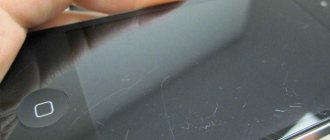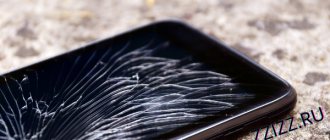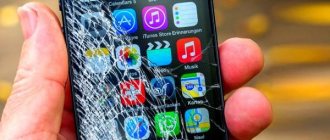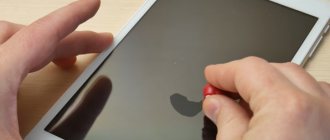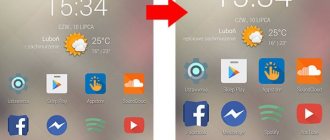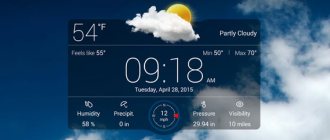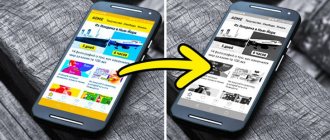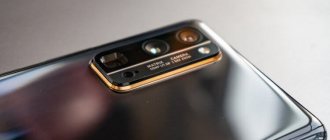Technologies do not stand still. Every year the cost of smartphones increases, as does the cost of repairing them. Even despite the development of Gorilla Glass technology and the increasing resistance of screens to breakage, more than 80% of users still prefer to additionally protect their smartphone with film, protective glass or liquid coating. In this article we talk about the types of screen protection and choose the best way to protect your smartphone screen in 2022.
Protective films
The films are made of plastic and usually have three layers: the top provides protection, the middle absorbs ultraviolet radiation from the phone, and the bottom, silicone, adheres to the screen. Protective film for a smartphone is excellent screen protection from mechanical impact. The film is made from high-quality polymer, which is durable and wear-resistant. Undoubtedly, the film is unlikely to protect your gadget from shock when dropped, but it calmly copes with scratches, chips, abrasions, etc.
Another advantage of the film is that it is almost invisible on the glass. It does not weigh down the device and does not interfere with the sensitivity of the sensor, but the film is quite difficult to apply.
Protective films are divided into 3 types:
- Glossy. This is a fairly common type of film because it has high-quality color rendition and does not distort the image, but in bright sunlight the screen is practically unreadable.
- Matte. They have an anti-reflective coating and therefore, unlike glossy ones, the screen is perfectly readable in any lighting, but the matte surface makes the image more grainy. Another advantage of matte protection is that it does not leave fingerprints.
- Mirrored. Mirrored protective films are similar in characteristics to glossy ones, but have an additional reflective effect, which means that when the screen is turned off, the smartphone can be used as a mirror.
Despite all the advantages of classic protective films, they are not relevant in 2022 because hydrogel films have appeared.
Why is it useless on modern smartphones?
Today, manufacturers cover mobile devices in the budget segment with standard glass. Modern devices are equipped with tempered glass, resistant to mechanical stress. It is difficult to damage such a surface even on purpose. With the advent of each new generation of gadgets, glass is “upgraded” in terms of shock resistance. For modern displays there is no need to apply additional protection, so buying a film coating is a waste of money.
A polyurethane device for a mobile phone screen is useful only to those who carry the gadget in a bag or pocket, along with small change and other items. It helps protect against minor scratches. The service life of the accessory is low, so it is periodically updated.
Most film coating models do not have an olephobic coating. Later, the surface accumulates dust and dirt, which impair the sliding of fingers. In addition, it reduces the sensitivity of the screen to commands during operation of modern devices.
Modern glass is not able to save the device if it falls from a height. But film is also useless here. The display protection tool will only help when the phone comes into contact with sand. Therefore, when going on vacation, you should first stick protection on the surface of the smartphone screen.
Hydrogel film
Hydrogel film is a high-strength polymer film that protects your smartphone from scratches, abrasions and mechanical stress. An interesting feature of this protection is its ability to self-heal. If even large scratches appear on such a coating, then within a day the film seems to “overgrow” and looks like new. Also, one of the advantages of hydrogel film is worth noting
- durability (hydrogel film will last several times longer than conventional film and glass)
- leaves no fingerprints or other traces
- does not affect color rendering in any way
- does not impair touch screen performance
- Fully adjustable to smartphone size
- can be installed with antiblue coating to reduce the harmful effects of the screen on the eyes
Which shockproof accessory is best?
Tempered glass has one main advantage over all types of films - impact resistance. Although it may break upon impact, the screen will remain intact.
However, not all types of glass cover the screen 100%, which does not guarantee the safety of the display.
If the impact falls on an unprotected area, the glass will remain intact, but the screen will be damaged. The hydrogel film also does not completely cover the screen, but if it breaks, it will keep it from falling apart.
The hydrogel protective accessory has innovative qualities, so it is difficult for ordinary films and glasses to compete with it.
So, even with prolonged use, it does not peel off at the edges, the service life is much longer, and the ability to regenerate (self-heal) completely knocks out competitors. They simply do not have this property.
When gluing the hydrogel film, virtually no bubbles are formed. And if they do appear, they can be eliminated by simply lifting the film. The same cannot be said about the usual accessories. For them, the problem remains relevant.
Standard protective films for phones are in many ways inferior to hydrogel ones, so you shouldn’t choose them.
Safety glasses
A more modern option for screen protection is tempered glass. It is much harder and thicker than regular film, so it protects the screen from shocks, falls and moisture. It consists of an oleophobic coating, which does not leave fingerprints and the finger glides well, protective and anti-reflective layers, as well as a reinforcing layer that prevents fragments from scattering in case of damage, and a sticky layer. Safety glass is divided into:
- Coating hardness. Hardness is determined by the H parameter of the glass; the higher it is, the stronger the glass. The strongest safety glass is considered to be glass with a 9H rating; it is more resistant to both scratches and breakage.
- Degrees of sizing. Safety glass comes in both Full Glue and No Full Glue types. Protective glasses that have full sizing are glued to the smartphone over the entire surface without leaving any air gaps or bubbles, while those with incomplete sizing have an adhesive base only along the edges of the glass and are considered to be of worse quality
- The quality of the oleophobic coating. Everything is simple here: the better the oleophobic coating on the protective glass, the longer fingerprints will not appear on it and the better the finger will glide.
Film, glass or Flexible Glass – which protection to choose
Contrary to popular belief, the answer to this question is not simple. The choice largely depends on your individual preferences and the conditions in which you use your smartphone. Therefore, we decided to study the characteristics of the above screen protectors to help you choose the best one.
3mk has been specializing in the production of protective films and hybrid glasses called Flexible Glass for many years. Below you will find detailed characteristics of each of them.
Protective films for smartphones
Film 3mk SHIELD
3mk SHIELD film is characterized by very good optical parameters, providing an ideal price-quality ratio. Its hardness is 3H.
Laser manufacturing makes SHIELD films ideally suited to the display surface. Inviscid-Sil™ tack effectively prevents bubble formation.
The kit includes additional accessories, thanks to which installation of the film is hassle-free. These include Fit-In™ Stickers, which hold the film in place during installation, Dust-Fix™ Sheets, which make it easier to install protective layers, and an Anti-Bubble Card, which helps remove any air bubbles.
Film 3mk HD Plus
The best choice for HD and Retina screens is the 3mk HD+ screen protector. It guarantees excellent sharpness and high color reproduction, thereby fully exploiting the potential of high-resolution sensors.
The use of an outer layer hardened by UV rays made it possible to obtain protection at the 5H level. Included are Fit-In™ Positioning Stickers, Dust-Fix™ Sheets, Dust-Free Cloth, and Anti-Bubble Card.
Film 3mk ARC
3mk ARC film was created with smartphones with curved screens in mind. Flexible design protects both flat surfaces and curved edges. It does not interfere with the use of functions located on the periphery of the display.
The homogeneous structure of the film preserves the clarity of color reproduction and also ensures perfect sliding of the finger over the surface of the screen.
The self-healing surface is of interest. Thanks to it, the film automatically levels out minor scratches, returning to its original state.
Protective cases for smartphones
Case 3mk ARC 3D
The 3mk ARC 3D transparent case will allow you to protect not only the screen, but also the back and sides of your smartphone. This way, every centimeter of the surface of the device will be properly protected, and the phone will not lose its original design.
Micro-Memory™ material allows the case to fit perfectly to the rounded edges of the smartphone. The Self-Heal™ coating restores the back of the ARC 3D if it gets minor scratches. In turn, the High-Grip™ coating reduces the risk of your phone slipping. The use of Air-Dots™ technology ensures complete breathability, allowing you to use your smartphone without worrying about overheating.
The 3mk case also has precisely positioned holes for a charger, headphones or microphone. What's important is that it is neutral to radio waves, so it does not negatively affect the quality of cellular communications or Wi-Fi.
Protective glasses for smartphones
Glass 3mk HardGlass
3mk HardGlass is tempered glass with a hardness of 9H, providing excellent scratch protection. HardGlass from 3mk is not afraid of encountering keys, coins and even a knife.
At the same time, the innovative hydrophilic coating maintains full sensitivity to touch and helps keep the screen clean. Thanks to this, you will not feel the presence of the protective glass in the slightest. At least until the display meets a sharp object. Then you will be convinced of its effectiveness.
3mk HardGlass glass has rounded edges using 2.5D technology, and its thickness is 0.3 mm, which ensures high comfort of use.
Glass 3mk HardGlass 2
HardGlass 2 is an improved successor to HardGlass. Boasts better color reproduction and even more impressive touch sensitivity.
The coating received the highest quality of execution, thanks to hardening at a temperature of 450°C. The density and adhesive properties of Inviscid-Sil™ have also been increased, which results in a better fit of the protective glass to the screen.
HardGlass 2 also has a hardness of 9H. The glass thickness was kept at 0.3 mm. Included accessories, including two wipes, make it easy to install glass and remove unsightly bubbles.
The biggest weakness of safety glasses
Tempered glass, of course, is much harder than regular glass, but... exactly, there is one thing. Glass always remains glass and retains the physical properties of this material. The biggest disadvantage of safety glasses is their cracking.
It may happen that a drop or strong pressure will damage the glass, requiring immediate replacement. When choosing tempered glass, we must take this into account.
Flexible Glass films and hybrid glasses are a more reliable option. We will now consider the latter in more detail.
Flexible Glass film – a hybrid of film and glass
Hybrid 3mk FlexibleGlass
FlexibleGlass from 3mk was created by combining film with glass. The result was a very flexible, very strong and, at the same time, unbreakable structure.
Example? The screen covered with Flexible Glass is 2.5 times better protected from impacts than with conventional protective glass. In addition, hybrid glass provides high scratch resistance with a coefficient of 7H. This means you won't scratch it with a tool steel knife.
What is important is that its thickness is only 0.2 mm. Installation of Flexible Glass is as simple as with other products.
FlexibleGlass 3D case
If you want to protect your entire phone, then use Flexible Glass 3D. By choosing this transparent case, you will also protect your smartphone from the sides and back.
The set includes: hybrid display glass with 7H hardness, as well as Self-Heal™ coating for the back and sides of the smartphone.
Using Flexible Glass 3D, you will provide your device with comprehensive and reliable protection.
Liquid glass
“Liquid glass” for smartphones has nothing to do with glass. It is a special solution containing a little silicate glue, synthetic wax and similar substances, which must be applied to the smartphone screen. The solution fills small scratches and they become less noticeable, and the oleophobic coating is also restored for several months, with which fingerprints will not remain on the screen. However, this coating does not have any other protective properties: it does not make the screen more resistant to drops and scratches, so it should be treated only as a cosmetic product.
Which film is better: matte or glossy?
At the end of the 20th century, we regularly printed photographs. Usually at such moments we chose not only the size of the photo, but also the type of photo paper. It's about the same story with films - they come in matte and glossy. Let's consider the main advantages and disadvantages of such surfaces.
Matte film:
- It is much more difficult to leave fingerprints on it;
- Almost complete absence of sun glare.
- The image becomes slightly grainier.
Glossy film:
- The picture is practically not distorted, its brightness is reduced by only 1%;
- This film is much easier to find on sale.
- Sun glare may appear;
- Fingerprints are clearly visible on the gloss.
Additional explanations are unnecessary here. All you have to do is decide which shortcomings are less significant for you, after which you can go to the store to make a purchase. Note that expensive glossy films have a special coating at their disposal (in the manner of an oleophobic one), as a result of which fingerprints accumulate a little more slowly.
Dimmable glass on iPhone
Your iPhone screen may also darken at an angle.
Have you seen how the ATM screen darkens when you look at it from an angle? This is done so that outsiders cannot monitor your manipulations. But they usually stare at the smartphone screen even more often, especially if you are traveling on public transport. This means you need to protect the contents of your iPhone from the eyes of unwanted viewers.
Price : from 120 rubles
Buy dimmable glass
This glass darkens automatically if you look at it at an angle of more than 30 degrees. This is enough for you to be able to use the device without any difficulty when holding it in front of you, but not enough for anyone to spy on what is happening on the screen. In addition, the glass has high strength and a matte coating that protects against glare. There are versions for all iPhones.
Difficulty of installation
Gluing the film is not easy due to the high flexibility of the material. It is necessary to carefully smooth out air bubbles, otherwise the image display will deteriorate. And if a speck of dust sticks to the adhesive backing of the film, in most cases the protective coating will have to be thrown away.
Installing the glass is noticeably easier, since the air is squeezed out under the weight of the protective coating. Also, unevenly installed glass can be easily removed and reinstalled. Likewise, if you need to remove dust particles with an adhesive base.
It is not yet difficult to install a hydrogel film. The peculiarity of this coating is that air bubbles dissolve, which will disappear in a couple of hours/days.
Wear resistance
During operation, the protective film or glass comes into contact with various abrasives and sharp objects. Therefore, the formation of small or deep scratches is inevitable. If we evaluate wear resistance on the Mohs scale, where hardness is represented by 10 reference minerals, the hardness of safety glass is usually 4-7 units, and in some high-quality glasses it reaches 8-9. Therefore, you can scratch the glass only with a sharp knife or keys with a certain amount of force applied.
The strength of the protective film on the Mohs scale is usually up to three units, so the coating is easily scratched by a fingernail or any other object of similar strength. Matte film fares better due to its increased thickness of several tens of microns. The strength of the hydrogel film is even better, where small scratches are healed after a couple of hours, and deep scratches become less noticeable after a day or two, but are not healed completely. However, any film cannot be compared in strength to glass.
The Chinese glossy film did not stick firmly and came off at the edges.
Transparency
This parameter determines the amount of light transmitted through the protective coating. The less light is delayed, the brighter and more saturated the picture is displayed on the screen of a mobile device.
The transparency of most films and glasses reaches 98%. Some cheap glasses from Chinese stores sometimes have up to 95 or 91% transparency, which is difficult to distinguish by visual comparison.
The type of coating is also important. Glossy surfaces demonstrate the best transparency, while matte surfaces reduce brightness and add graininess to the picture. At the same time, the mechanical properties and durability of the matte coating are better. If display quality is a priority, then you should only consider glossy film/glass.
Motorola Maxx 2 with regular Chinese 2.5D glass.
Pros and cons of film
@macincase.com.ua
It protects against scratches and, due to its thickness, is invisible on the surface. It is low in cost; if necessary, you can buy a new one and easily replace it.
But its significant drawback is that it cannot withstand physical influences. This protection against impact is weak. If you drop the phone, the screen will crack and everything will have to be replaced, including the display and film.
Another disadvantage is the difficulty of gluing. It can be difficult for a beginner to cope with this process. Many bubbles that form under the surface spoil the appearance and are difficult to get rid of. If the pasting was done incorrectly, this product cannot be re-glued, only use a new film.
Advantages and disadvantages of glass
@ae01.alicdn.com
The features of both products have already been noted, it is worth noting in more detail the pros and cons of each of them. This will allow you to get a complete picture of the product. Among the advantages of a glass protector it is worth noting:
- It is quite thick, and if the phone falls, the blow will be softened. It will not protect against serious damage, but it will completely protect against scratches and cracks. When dropped, the protective surface cracks, but the screen remains intact. It will be enough to replace the coating.
- Although glass is more expensive than a film product, purchasing it is cheaper than replacing a damaged display.
- Much easier to glue The user can easily cope with this task independently. Just read the instructions and follow all the steps. If you don’t succeed in gluing the first time, you can remove the glass and carry out the manipulation again.
Such a product does not differ in variety, but the user still has a choice. Glass protectors are divided into 2.5D and 3D models and come with various substrates and colored contours.
The described advantages apply only to high-quality products with a special coating. Other models with a suspiciously low price and a little-known manufacturer may actually not be as durable as stated in the product description.
The thickness reduces the sensitivity of the sensor, which may affect the phone's performance and ease of use. Also, some owners of “new products” have to wait until products that meet the parameters appear on the market. The film can be cut to fit the desired screen; similar manipulations cannot be done with glass.
